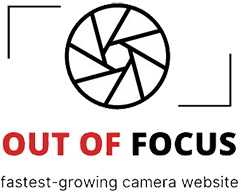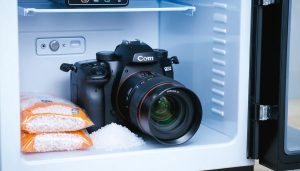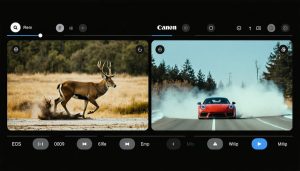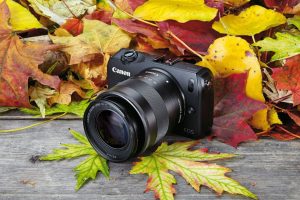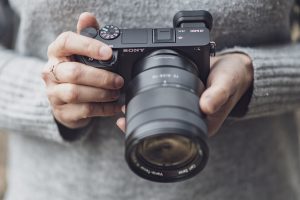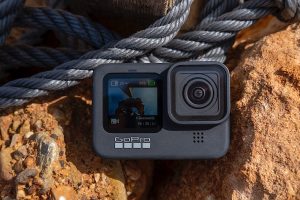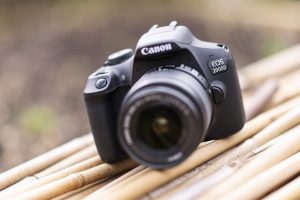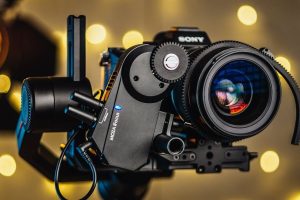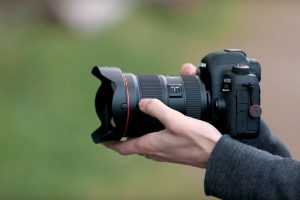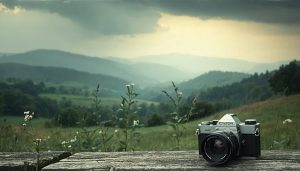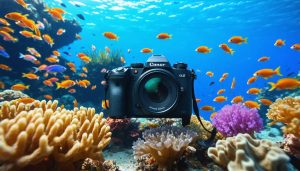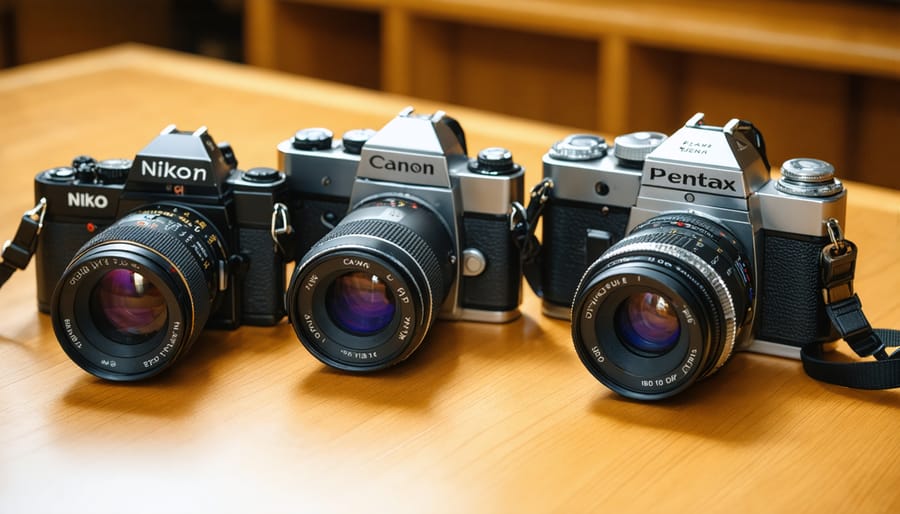
Japanese vintage cameras represent the perfect fusion of precision engineering and timeless artistry, defining an era when names like Nikon, Canon, and Pentax revolutionized photography through relentless innovation and meticulous craftsmanship. During the post-war economic boom of the 1950s and 1960s, Japanese manufacturers transformed from mere imitators into industry pioneers, producing cameras that would challenge and ultimately surpass their German counterparts in both quality and popularity.
From the legendary Nikon F that dominated photojournalism for decades to the compact yet powerful Canon P that brought professional-grade photography to the masses, these mechanical masterpieces continue to captivate collectors and photographers alike. Their all-metal construction, buttery-smooth focusing mechanisms, and distinctive design aesthetics offer modern photographers a tactile connection to photography’s golden age while delivering images with a character impossible to replicate with digital equipment.
Whether you’re an experienced collector seeking rare specimens like the Minolta CLE or a photography enthusiast drawn to the mechanical precision of a Pentax K1000, Japanese vintage cameras offer an unparalleled combination of historical significance, mechanical reliability, and creative potential. These cameras aren’t just collectibles; they’re functional works of art that continue to inspire and create stunning images in the hands of contemporary photographers.
The Golden Age of Japanese Camera Manufacturing
Rise of Japanese Camera Giants
The post-war era marked a transformative period for Japanese camera manufacturers, who emerged from the ashes of World War II to become global leaders in photographic innovation. Companies like Canon, Nikon, and Pentax began their ascent by reverse-engineering German cameras, particularly Leica and Contax models, but soon developed their own unique technologies and design philosophies.
Canon, originally named Precision Optical Industry Co., Ltd., made its mark with the revolutionary Canon II rangefinder in 1949, establishing itself as a serious competitor to European manufacturers. Nikon, leveraging its expertise in optical engineering from military contracts, released the Nikon I in 1948, which caught the attention of photojournalists covering the Korean War.
Pentax (then Asahi Optical) revolutionized the industry in 1957 with the Pentax AP, the first Japanese SLR with a quick-return mirror. This innovation made the camera more practical for rapid shooting and helped establish Japan’s reputation for technical excellence.
The 1960s and 1970s saw these companies cementing their dominance through technological advancement and competitive pricing. They introduced features like through-the-lens metering, automated exposure systems, and electronic shutters, while maintaining high build quality. This combination of innovation, reliability, and value proposition effectively shifted the center of camera manufacturing from Germany to Japan, creating a legacy that continues to influence photography today.
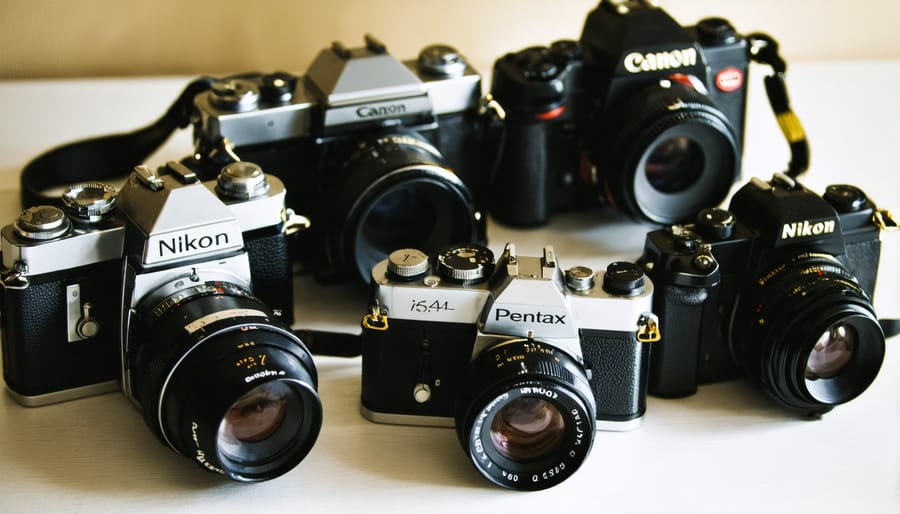
Innovation and Quality Standards
Japanese vintage cameras earned their stellar reputation through groundbreaking innovations and uncompromising quality standards that revolutionized the photography industry. During the 1950s and 1960s, Japanese manufacturers introduced precision manufacturing techniques that combined traditional craftsmanship with modern engineering principles.
Companies like Nikon and Canon pioneered advanced metering systems and introduced innovations like titanium shutters and improved lens coatings. The Nikon F, released in 1959, showcased Japanese engineering excellence with its modular design and robust construction, setting new standards for professional cameras worldwide.
What truly set Japanese cameras apart was their remarkable build quality. Manufacturers employed high-grade materials like brass and aluminum alloys, coupled with precise machining techniques. Quality control was particularly stringent, with many cameras undergoing multiple inspections before leaving the factory. This attention to detail resulted in cameras that not only performed excellently but also stood the test of time.
The mechanical precision of Japanese vintage cameras is evident in their smooth operating mechanisms. From the butter-smooth film advance levers to the perfectly damped shutter releases, these cameras exemplify mechanical perfection. Even today, many Japanese vintage cameras from the 1960s and 1970s continue to function flawlessly, testament to their exceptional build quality and innovative engineering approaches.
Most Coveted Japanese Vintage Cameras
Iconic SLR Models
Japanese SLR cameras revolutionized photography in the 1950s and beyond, with many models becoming valuable vintage cameras today. The Nikon F, introduced in 1959, stands as a masterpiece of engineering that established Japan’s reputation for excellence in camera manufacturing. This rugged, professional-grade camera system became the go-to choice for photojournalists worldwide, featuring interchangeable viewfinders, motor drives, and the legendary F-mount that’s still compatible with modern Nikon lenses.
Canon’s response came in 1971 with the formidable F-1, a professional-grade SLR that showcased Japanese innovation at its finest. Built like a tank, the F-1 offered unprecedented customization options and reliability that made it a favorite among photographers covering everything from Vietnam War zones to Olympic events.
Other noteworthy models include the Minolta SRT series, particularly the SRT-101, which introduced the groundbreaking through-the-lens (TTL) metering system. The Pentax Spotmatic, launched in 1964, brought spot metering to the masses and established the M42 screw mount as a universal standard.
These cameras weren’t just tools; they represented a perfect fusion of precision engineering and practical design. Their influence extends beyond their era, with many modern digital cameras still incorporating design elements first introduced by these pioneering Japanese SLRs.
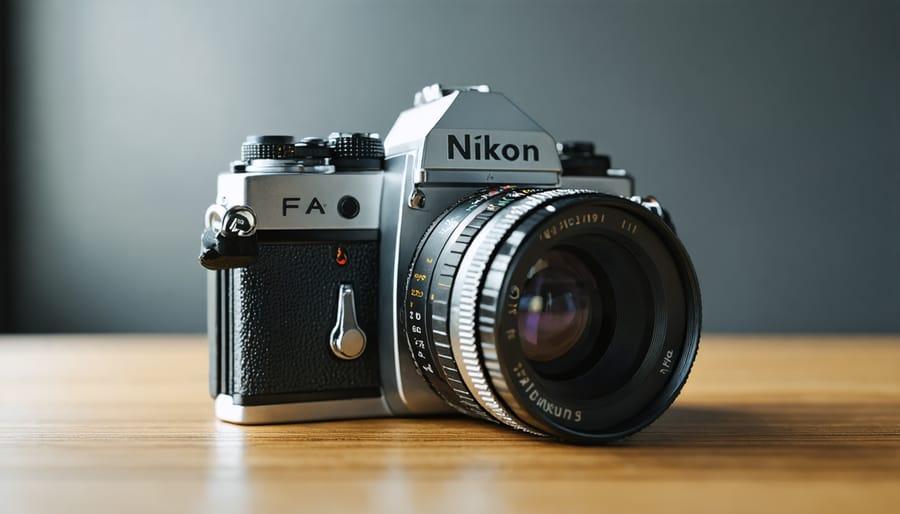
Legendary Rangefinders
Among the most coveted Japanese vintage cameras, rangefinders hold a special place in photographers’ hearts, with the Canon P and Nikon SP standing as shining examples of Japanese optical excellence. The Canon P, released in 1959, earned its legendary status through its exceptional build quality and remarkably bright viewfinder. Often called the “Popular,” this camera combined simplicity with precision, featuring a robust cloth shutter and compatibility with Leica screw-mount lenses.
The Nikon SP, introduced in 1957, represented Japan’s answer to the Leica M3. This professional-grade rangefinder featured an innovative viewfinder system with frame lines for multiple focal lengths and a 1:1 viewfinder magnification that many photographers still consider unmatched. The SP’s influence on camera design extended well beyond its era, inspiring many modern digital cameras.
Both cameras exemplified the Japanese commitment to precision engineering. The Canon P became famous for its reliability and smooth operation, while the Nikon SP showcased revolutionary features like the multi-viewfinder system. These cameras weren’t just tools; they were statements of Japan’s emerging dominance in the camera industry.
Today, these rangefinders remain highly sought after by collectors and photographers alike, with working examples still capable of producing stunning images. Their mechanical precision, coupled with the pure photography experience they offer, continues to attract enthusiasts seeking a connection to photography’s golden age.
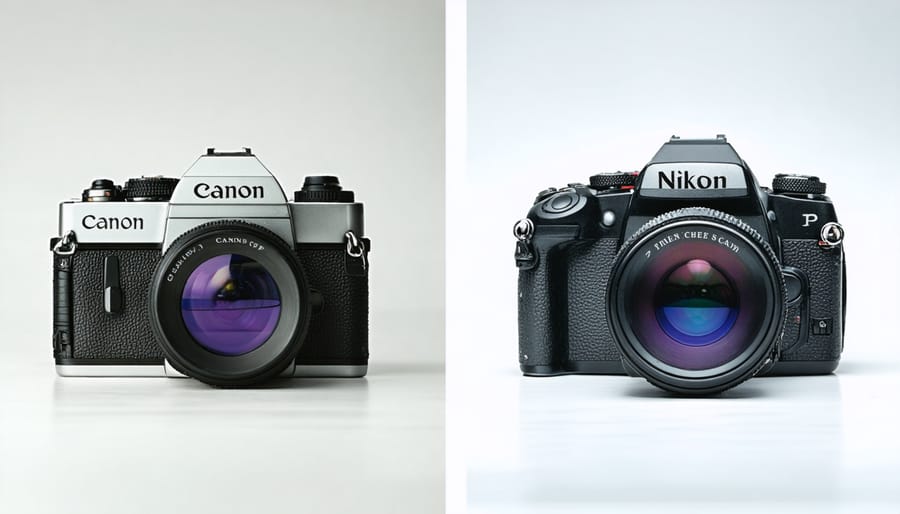
Cult Favorites
While Nikon, Canon, and other major brands dominate vintage camera discussions, Japan’s photographic history holds numerous hidden gems that command fierce loyalty among collectors. The Yashica Electro 35, for instance, earned its cult status through its innovative electronic exposure system and remarkably sharp lens, making it a favorite among street photographers.
The Minolta XD-7 (known as XD-11 in North America) represents another cult classic, featuring one of the first dual-mode automatic exposure systems. Its butter-smooth operation and compact size have made it a sought-after model among film photography enthusiasts.
Lesser-known manufacturers like Petri produced gems like the Petri 7s, which offers exceptional build quality and a stellar Color Corrected Super lens that rivals more expensive contemporaries. Similarly, the Konica Auto S3 remains highly coveted for its exceptional lens quality and compact size, often being compared favorably to the more expensive Leica CL.
The Olympus XA series, particularly the original XA, revolutionized compact cameras with its clam-shell design and exceptional image quality. This pocket-sized marvel continues to attract devoted followers who appreciate its discrete profile and professional-grade results.
These cameras might not have achieved mainstream fame, but their unique features, exceptional build quality, and outstanding performance have earned them dedicated followings in photography circles.
Collecting and Using Japanese Vintage Cameras
What to Look For
When hunting for a vintage Japanese camera, several crucial factors deserve your attention. First, examine the camera’s mechanical condition thoroughly. Listen for smooth shutter operation, check for light seals’ integrity, and ensure all dials and knobs move freely without sticking. Pay special attention to the viewfinder’s clarity and any signs of fungus in the lens elements.
Build quality is a hallmark of Japanese cameras, but even well-made devices can suffer from age-related issues. Test the light meter if present – while many collectors find non-functioning meters acceptable, it’s essential to factor this into your purchasing decision. Inspect the camera body for signs of brass showing through on heavily worn areas, which can actually add character and value to certain models.
Price varies significantly based on brand prestige, model rarity, and condition. Popular brands like Canon, Nikon, and Pentax typically command higher prices, but lesser-known manufacturers like Yashica and Minolta often offer excellent value. Research market prices thoroughly before making a purchase, and consider how you’ll store and showcase your cameras using creative display ideas.
Documentation matters too – original manuals, boxes, and cases can significantly increase a camera’s value and authenticity. Look for cameras with their original leather cases, as these often protected the equipment from damage over the decades. Finally, consider the availability of compatible film, lenses, and accessories before committing to a particular system, as some formats are easier to use and maintain than others in today’s market.
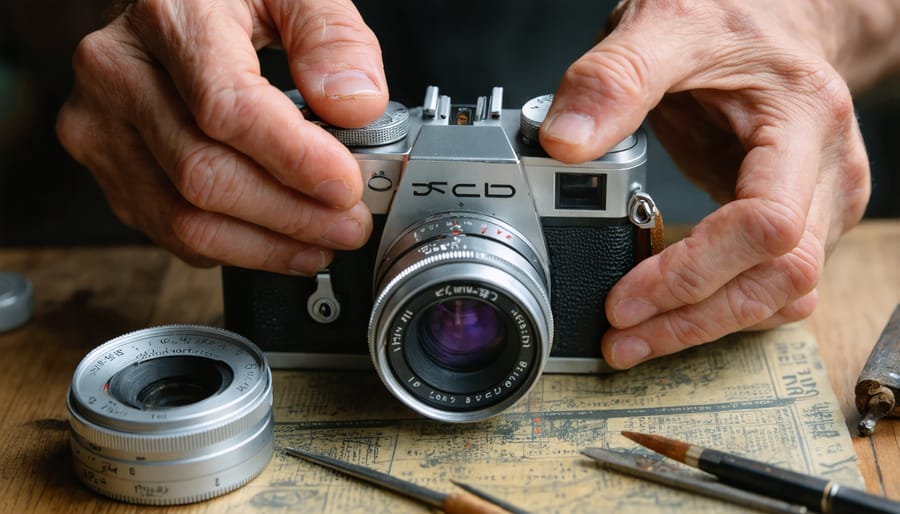
Common Issues and Maintenance
When collecting vintage Japanese cameras, you’ll likely encounter several common issues that require attention. Light seals deterioration is perhaps the most frequent problem, causing light leaks that can ruin your photographs. These foam seals typically degrade over time and need replacement – a relatively straightforward fix that’s covered in our essential maintenance tips.
Mechanical shutters often develop sluggishness or stick completely, especially if the camera hasn’t been used for years. This usually results from old lubricants hardening, requiring professional servicing. Viewfinder fungus is another prevalent issue, appearing as spider-web-like patterns that can significantly impact composition and focusing accuracy.
Battery compatibility poses a unique challenge, as many vintage cameras used mercury batteries that are no longer available. While adapter solutions exist, they sometimes require slight exposure compensation adjustments. Following our comprehensive camera maintenance guide can help prevent many common problems.
To maintain your vintage Japanese camera, store it in a dry environment with silica gel packets to prevent moisture damage. Regular exercise of mechanical parts helps prevent seizure – advance the film advance lever and release the shutter periodically, even without film loaded. Clean the lens elements gently with proper equipment, and avoid storing cameras with batteries installed for extended periods.
If you’re purchasing a vintage camera, always test the shutter speeds, check for light leaks, and examine the lens for fungus or haze. Many issues can be addressed through routine maintenance, but some may require professional attention. Remember that these cameras were built to last, and with proper care, they can continue serving photographers for many more decades.
Where to Find Them
For collectors seeking vintage Japanese cameras, several reliable sources stand out in today’s market. Japan itself remains the premier destination, with Tokyo’s Shinjuku district, particularly along Camera Street (Shinkyō-dōri), hosting numerous reputable camera shops. Map Camera and Lemon Camera are standout establishments known for their carefully curated selections and knowledgeable staff.
Online marketplaces like Japan Camera Hunter and Bellamy Hunt’s personal sourcing service offer excellent options for international buyers, with the added benefit of professional testing and authentication. These services often include detailed condition reports and communication in English, making the process smoother for foreign collectors.
eBay can be a viable option, but buyers should exercise caution and only purchase from sellers with high ratings and detailed item descriptions. Japanese auction sites like Yahoo! Japan Auctions offer extensive selections, though you’ll likely need a proxy service to facilitate purchases.
Local camera shops specializing in vintage equipment can be treasure troves, often providing hands-on inspection opportunities and valuable expertise. Once you’ve acquired your cameras, proper storage solutions for vintage cameras become essential for preservation.
Photography fairs and conventions present excellent opportunities to not only find cameras but also connect with fellow enthusiasts and experts. The annual Camera Grand Prix in Japan and various international photography shows often feature vintage camera vendors and collectors.
Remember to research market prices thoroughly before making purchases, and when possible, request detailed photos and condition reports, particularly for online transactions.
Modern Photography with Vintage Japanese Cameras
Despite their age, vintage Japanese cameras continue to prove their worth in modern photography, offering unique characteristics that many contemporary photographers find appealing. The mechanical nature of these cameras forces photographers to slow down and think more deliberately about their compositions, leading to more thoughtful and intentional images.
Many vintage Japanese cameras excel in specific areas where modern equipment sometimes falls short. For instance, the Pentax 67’s medium format capabilities still deliver exceptional image quality and that distinctive aesthetic that digital cameras often struggle to replicate. The Canon P rangefinder, with its bright viewfinder and precise focusing mechanism, remains an excellent choice for street photography.
These cameras also bring practical advantages to contemporary shooting. Their all-metal construction often proves more durable than modern plastic bodies, and their simple mechanical designs mean they can operate without batteries in many cases. The superior optical quality of vintage Japanese lenses, particularly from manufacturers like Nikon and Canon, continues to impress, producing images with character and rendering that many photographers prefer over clinical modern optics.
However, using vintage cameras in contemporary settings does require some adaptation. Manual focusing and exposure calculations take practice, and film costs and processing time need consideration. Yet many photographers find these “limitations” actually enhance their creative process and technical understanding of photography.
For those interested in incorporating these cameras into their modern workflow, many photographers successfully pair vintage lenses with digital bodies through adapters, offering a hybrid approach that combines classic optical characteristics with modern convenience.
Japanese vintage cameras continue to captivate photographers and collectors worldwide, representing a perfect fusion of precision engineering, artistic design, and historical significance. These remarkable instruments not only shaped the evolution of photography but also symbolize Japan’s post-war industrial renaissance and technological innovation.
The enduring appeal of Japanese vintage cameras lies in their exceptional build quality, mechanical reliability, and timeless aesthetics. From the iconic Nikon F series to the precision-crafted Canon rangefinders, these cameras offer a tactile shooting experience that modern digital equipment simply cannot replicate. Their all-metal construction and mechanical operations provide a connection to photography’s roots while delivering results that remain impressive by today’s standards.
For collectors and enthusiasts, Japanese vintage cameras represent more than just photographic tools – they’re tangible pieces of history that tell stories of innovation, craftsmanship, and artistic expression. The growing community of vintage camera users demonstrates that these cameras aren’t merely collectibles gathering dust but remain viable creative instruments in contemporary photography.
As we look to the future, the value and appreciation for Japanese vintage cameras continue to grow. Whether you’re drawn to their mechanical precision, historical significance, or the unique aesthetic quality of images they produce, these cameras offer an authentic photographic experience that transcends generations. They remind us that great photography isn’t about having the latest technology, but about the connection between photographer and camera, and the vision that connection inspires.
